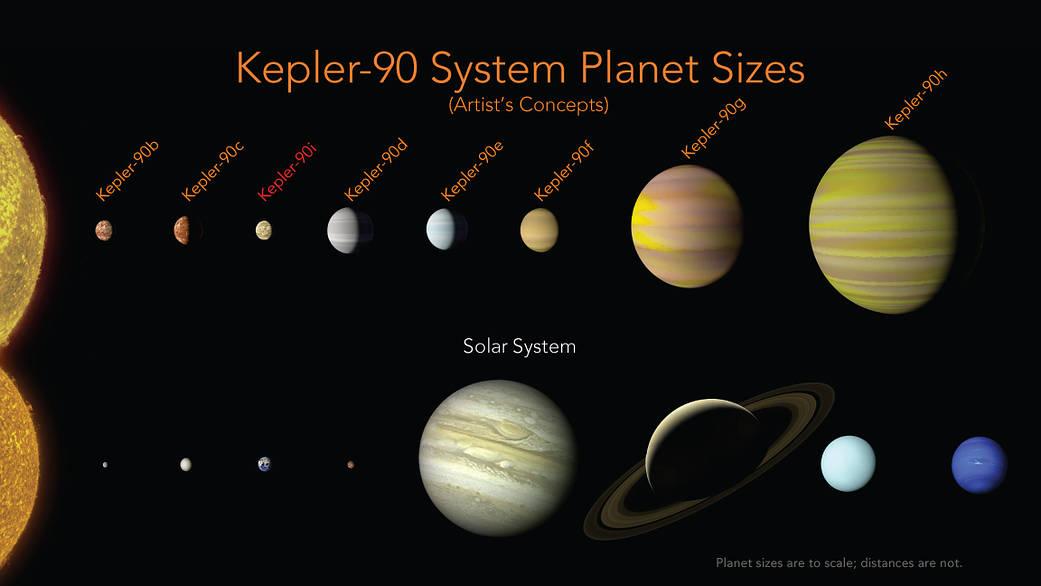
Artificial intelligence just discovered an eighth planet orbiting Kepler-90, a sun-like star some 2,545 light-years from Earth. Researchers found the planet in data from NASA’s Kepler Space Telescope, NASA announced today. Our solar system is now tied for most number of planets around a single star.
Known as Kepler-90i, it orbits its star once every 14.4 days. It was discovered using technology called machine-learning from Google, an approach to artificial intelligence in which computers “learn.”
“Just as we expected, there are exciting discoveries lurking in our archived Kepler data, waiting for the right tool or technology to unearth them,” said Paul Hertz, director of NASA’s Astrophysics Division in Washington. “This finding shows that our data will be a treasure trove available to innovative researchers for years to come.”
Researchers Christopher Shallue and Andrew Vanderburg trained a computer to find exoplanets within the light readings recorded by Kepler – tiny variations in brightness caught when a planet transits a star. The artificial “neural network” sifted through Kepler data and found weak transit signals from a previously unnoticed eighth planet orbiting Kepler-90, in the constellation Draco, according to NASA.
Keplar-90 isn’t as likely to harbor life as other plantery systems. About 30 percent larger than Earth, Kepler-90i is too close to its star, creating an average surface temperature is believed to exceed 800 degrees Fahrenheit, like Mercury. Its outermost planet, Kepler-90h, orbits at a similar distance to its star as Earth does to the Sun.
“The Kepler-90 star system is like a mini version of our solar system. You have small planets inside and big planets outside, but everything is scrunched in much closer,” said Vanderburg, a NASA Sagan Postdoctoral Fellow and astronomer at the University of Texas at Austin.
For more information about the Keplar-90 system, visit NASA.gov.

No comments yet.